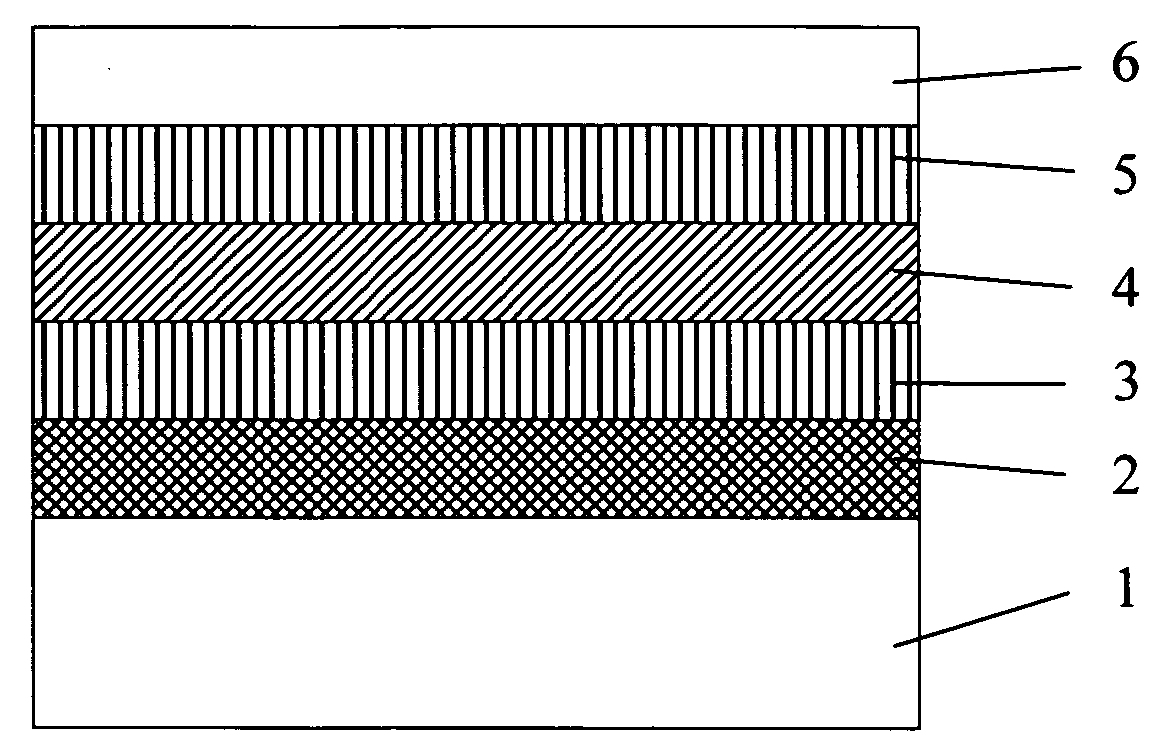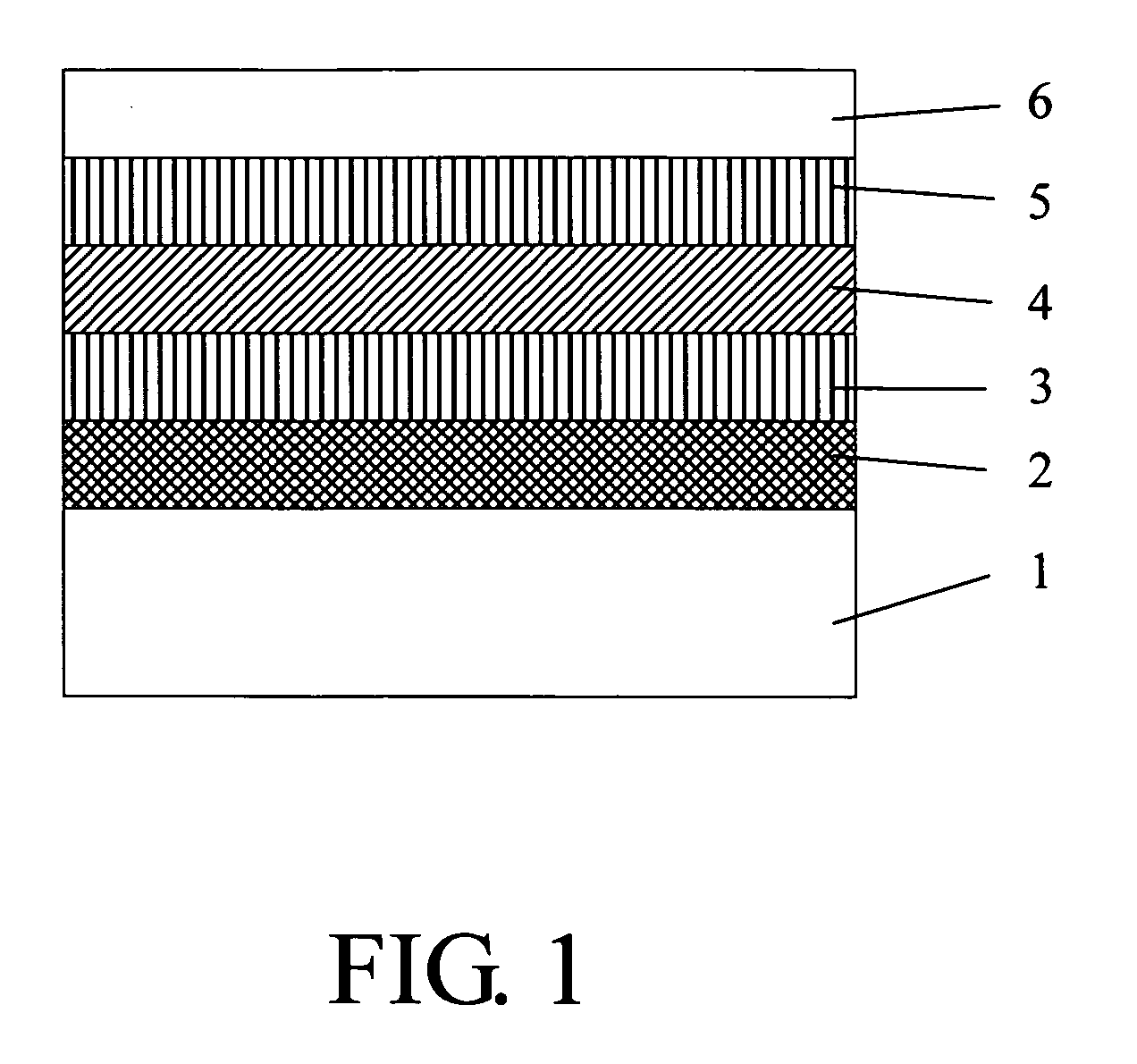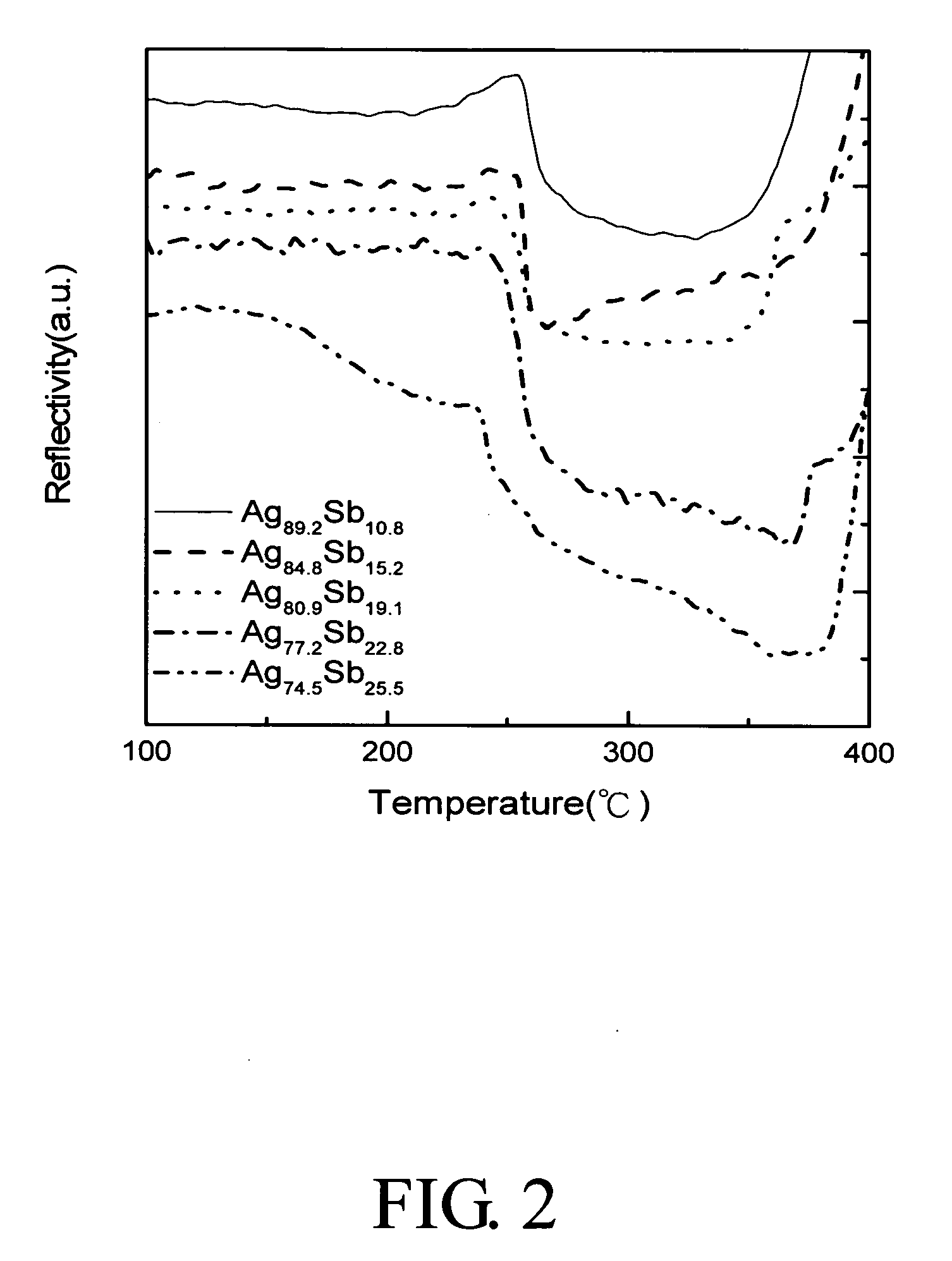AgSb recording thin film for the inorganic write-once optical disc and the manufacturing method
a technology of write-once optical discs and recording thin films, which is applied in the field of recording thin films, can solve the problems of large jitter values and distortion of disks, poor durability, and poor visible light absorption, and achieve good long-term storage reliability and reproductive durability. good
- Summary
- Abstract
- Description
- Claims
- Application Information
AI Technical Summary
Benefits of technology
Problems solved by technology
Method used
Image
Examples
example 1
[0033]The initial substrate temperature was at room temperature. After the sputtering chamber was evaluated to 2×10−7 Torr, Ar gas was introduced into the chamber. The Ar pressure was maintained at 3 mTorr during the entire sputtering period. The sputtering conditions for producing an multi-layer films, which is comprised of a ZnS—SiO2 dielectric layer, a AgSb recording layer, and a Ag reflective layer, sequentially deposited on a substrate in the mentioned order were shown in Table 1.[0034]FIG. 2 shows the relationship between reflectivity and temperature of the as-deposited Ag1-xSbx films at a heating rate of 50° C. / min. Two reflectivity changes are clearly observed in all the films as the temperature is increased from 100 to 400° C.
[0035]It indicates that the first phase transition temperature of Ag1-xSbx films is around 250° C. Moreover, a higher reflectivity is observed when the Sb content of the film is lower than 19.1 at. %. But, the films with Sb content lower than 19.1 at. ...
example 2
[0036]FIG. 3 shows the relationship between the absorption and the Sb content of the as-deposited Ag1-xSbx film at various laser beam wavelengths. It is found that the absorption of Ag1-xSbx film increases as the Sb contents increase from 10.8 at. % to 19.1 at. % for the laser wavelengths of 405, 635 and 780 nm. As the Sb content is 19.1 at. %, the Ag1-xSbx film has the highest absorption for all laser wavelengths.
[0037]FIG. 4. shows the relationship between the absorption and the Sb content of the Ag1-xSbx film which annealed at 300° C. For the wavelengths of 405, 635 and 780 nm, it is found that when the Sb content is smaller than 19.1 at. %, the absorption decrease of Ag1-xSbx film increases as the Sb content is increased. Moreover, the maximum value of absorption decrease of the Ag1-xSbx film is occurred at Sb content of Sb ˜19.1 at. %. When the Sb content is larger than 19.1 at. %, the absorption decrease of Ag1-xSbx film decreases as the Sb content increases.
[0038]FIG. 5. show...
example 3
[0040]FIG. 6 and FIG. 7 show the reflectivity and contrast of the as-deposited and annealed Ag80.9Sb19.1 films at various laser beam wavelengths, and annealing temperatures 300° C. and 350° C., respectively. The reflectivity of the Ag80.9Sb19.1 film is decreased after annealing at 300° C. or 350° C. From the X-ray diffraction pattern (FIG. 8), we observed that the as-deposited Ag80.9Sb19.1 film has orthorhombic ∈′-AgSb crystalline structure. The orthorhombic structure is the cause of the optical anisotropy. By grain refining, the optical anisotropy could be reduced to avoid the difference of reflection from different grain orientation. FIG. 9, FIG. 10 and FIG. 11 show the TEM images and electron diffraction patterns of the as-deposited, annealed at 300° C. and 350° C. Ag80.9Sb19.1 films, respectively.
[0041]From FIG. 9, it is found that the grain sizes are about 5-10 nm and the grains are uniform for the as-deposited film. The optical anisotropy is reduced due to this small and unifo...
PUM
| Property | Measurement | Unit |
|---|---|---|
| Temperature | aaaaa | aaaaa |
| Temperature | aaaaa | aaaaa |
| Fraction | aaaaa | aaaaa |
Abstract
Description
Claims
Application Information
 Login to View More
Login to View More - R&D
- Intellectual Property
- Life Sciences
- Materials
- Tech Scout
- Unparalleled Data Quality
- Higher Quality Content
- 60% Fewer Hallucinations
Browse by: Latest US Patents, China's latest patents, Technical Efficacy Thesaurus, Application Domain, Technology Topic, Popular Technical Reports.
© 2025 PatSnap. All rights reserved.Legal|Privacy policy|Modern Slavery Act Transparency Statement|Sitemap|About US| Contact US: help@patsnap.com



